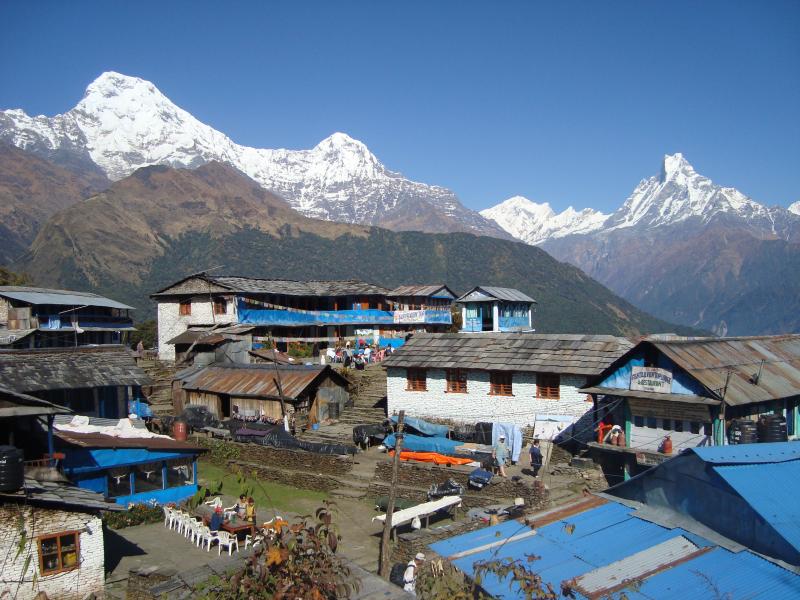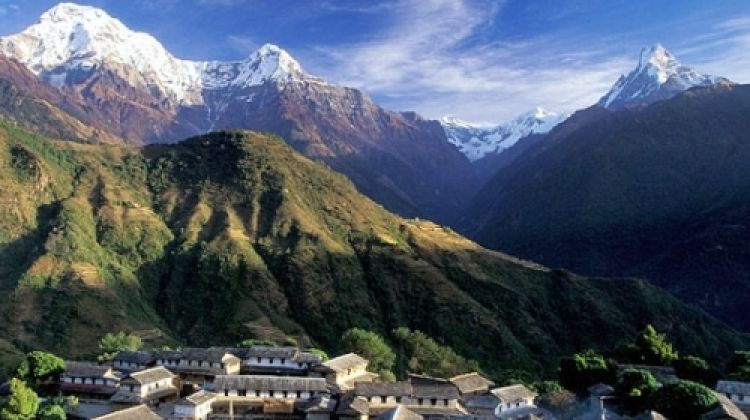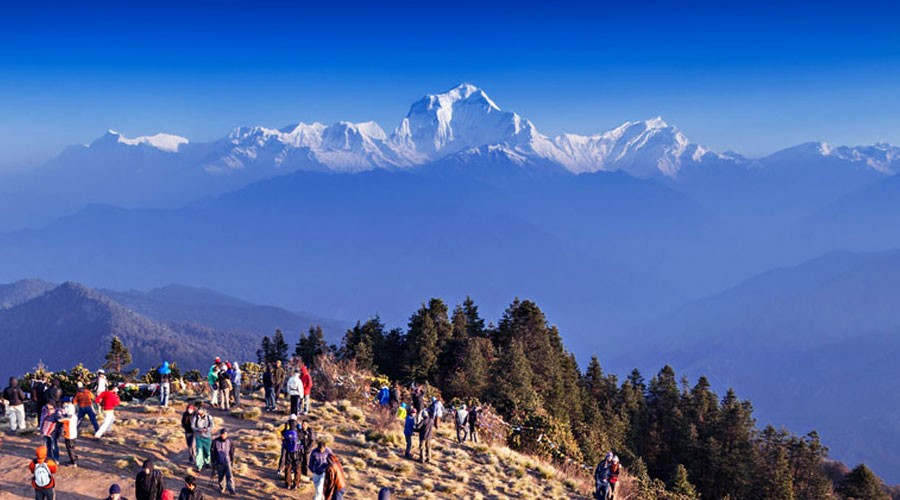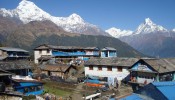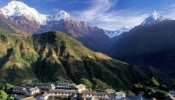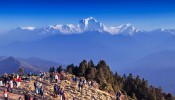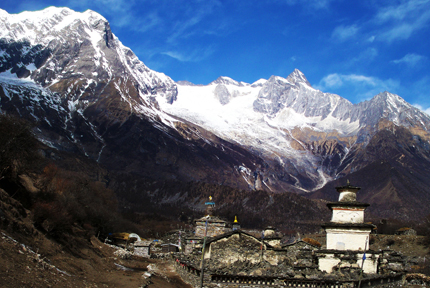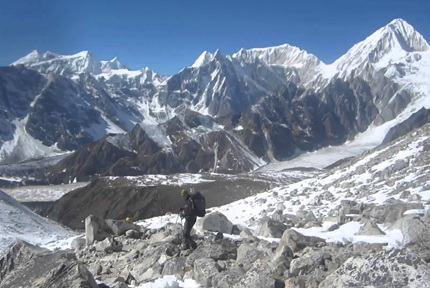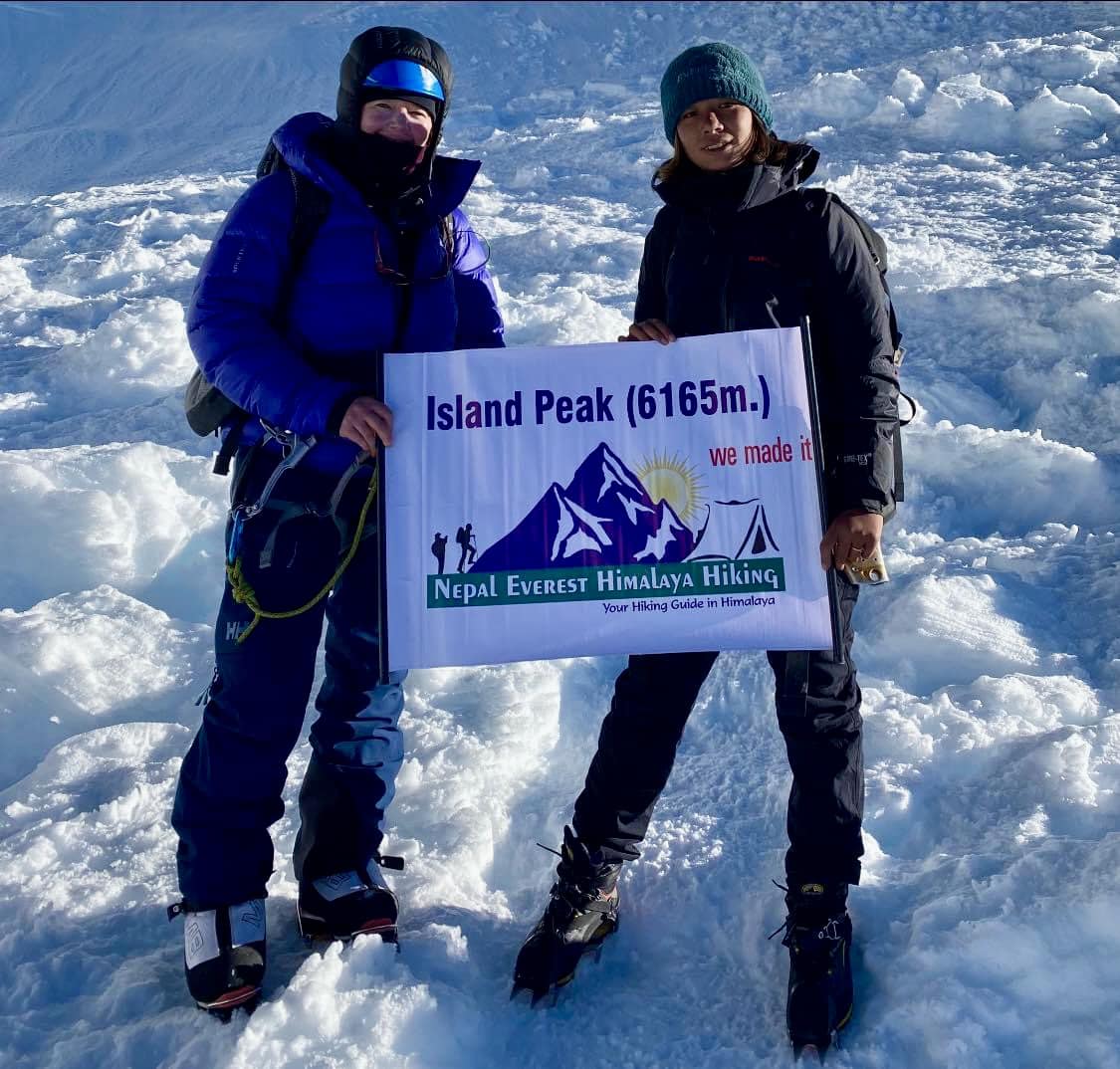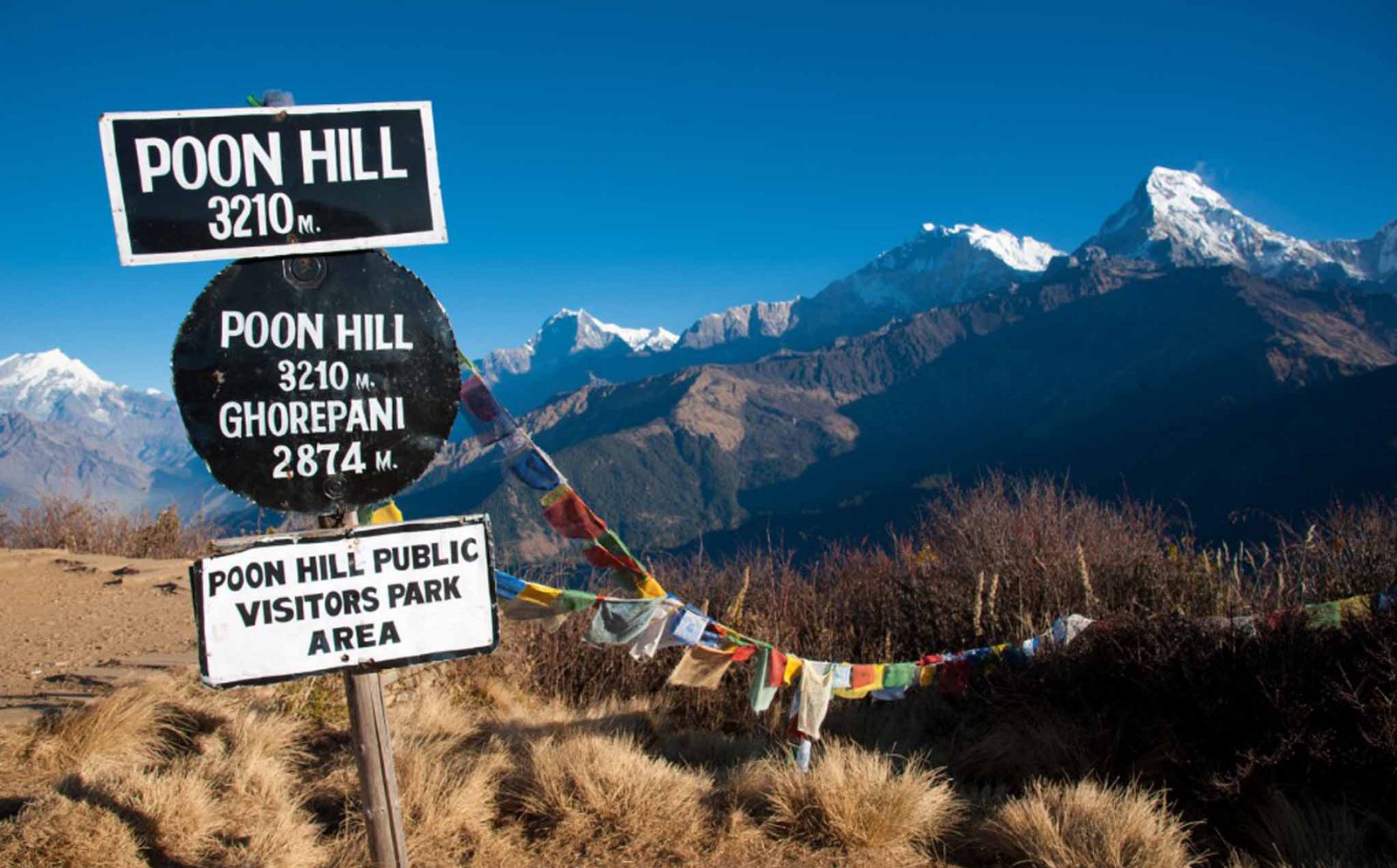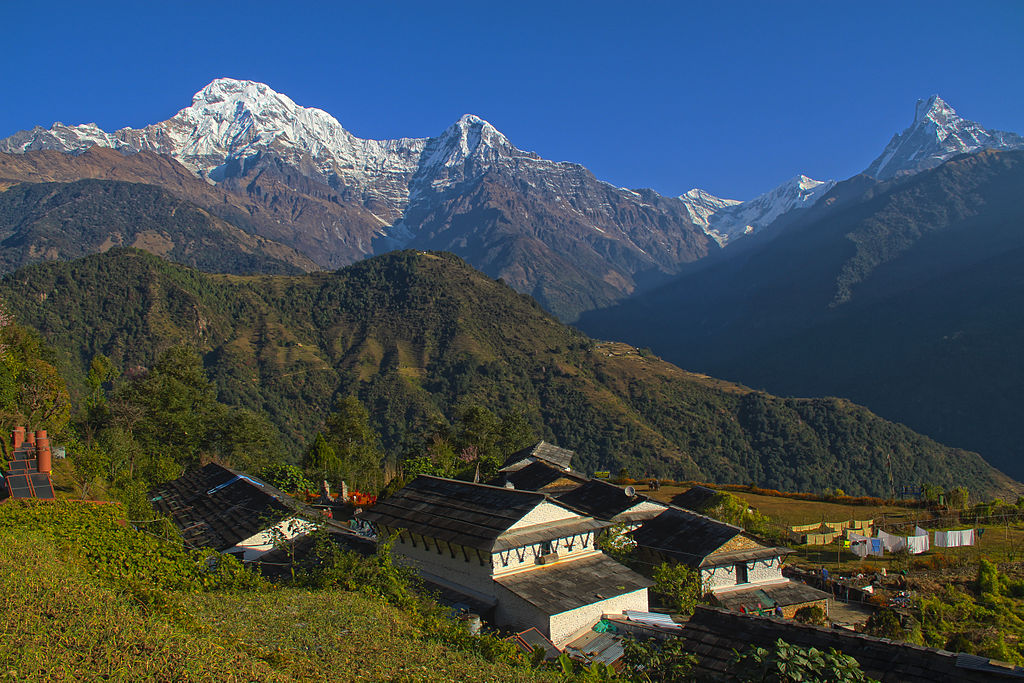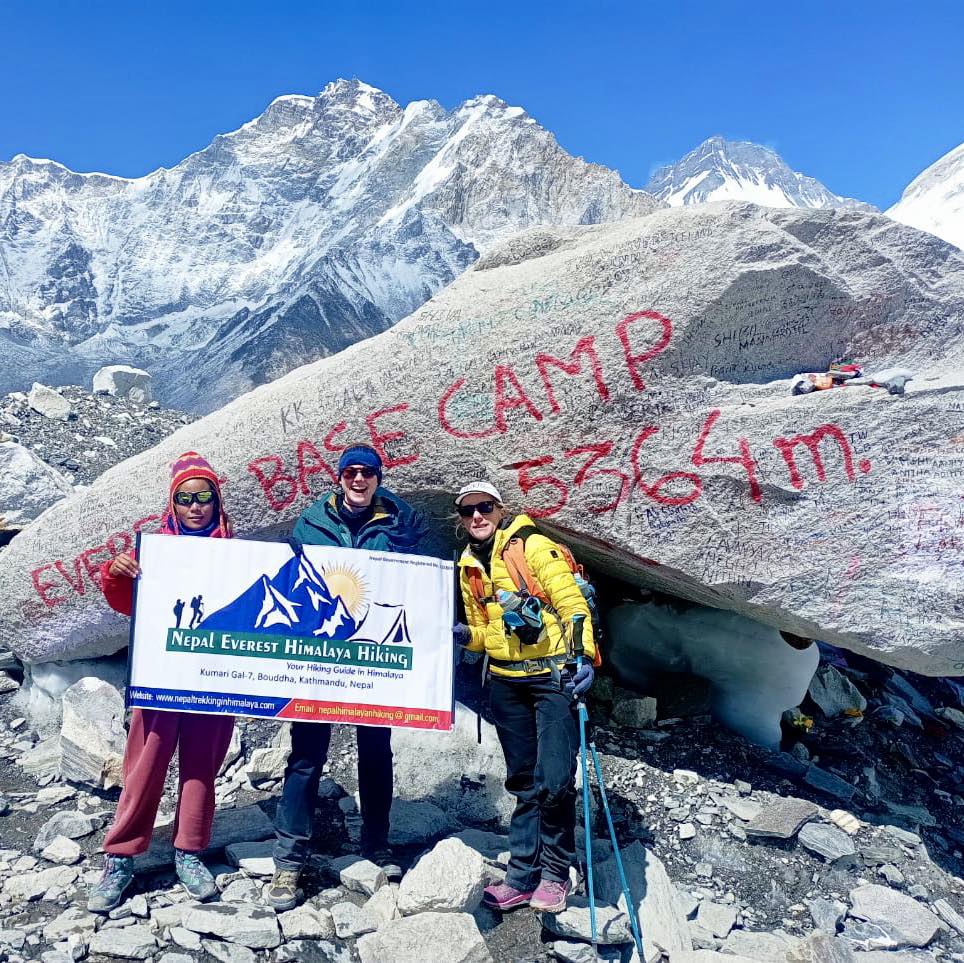Day 01: Arrival in kathmandu and tranfer to the hotel.
We will pick up you from the airport and transfer to your hotel in Kathmandu.
Day 02: Free and arrangement day.
We will introduce your trekking guide and arrangement day, As an option you can do the sightseeing around Kathmandu.
Day 03: Drive to Pokhara by bus (6 HRS)
We will drive to Pokhara by tourist bus which will take around 6 hours, the highway is called as prithivi highway which goes along the Trishuli River , Famous river for white water rafting.
Day 04: Pokhara - Tikhe Dhunga . (1495m).
We Drive to Nayapul, passing through the beautiful village of Lumle where preparations will be made in anticipation of the trek to Birethanti. This particular leg of the journey snakes along the main trail to Sudami with a steady ascent along the side of the valley before concluding the day’s trek at Hile.
Day 05: Tikhe Dhunga to Ghorepani (2850m). (approximately 5-hrs).
Tirkhe Dhunga – Ghorepani. Departing Tirkhe Dhunga, Walking through a stream before climbing a stone staircase to the far-stretching village of Magar at Ulleri (2070m). On the way to the day’s final destination, journey through lush forests, across sparkling streams before arriving at Nangethanti and Ghorepani.
Day 06: Ghorepani to Poon Hill (3201M) and trek to Tadapani:
An early morning ascent to Poon Hill treats trekkers to an enlightening scene as the sun climbs the sky to peak out from behind the Himalayan titans of Dhaulagiri, Annapurna, and Manalsu. Return to the lodge for breakfast before beginning your return-descent to Ghorepani, concluding the day’s events with an overnight stay at Tadapani.
Day 07: Tadapani to Ghandrung.
Journey begins with a downhill descent offering a cornucopia of breath-taking views of the Annapurna mountains before a somewhat-steep drops trekkers at Kimche (1630m) where the group will rest for a moment before pressing onto Chane. Next, walk atop a flag-filled path which slides through the Gurung-inhabited village of Ghandruk.
Day 08: Ghandrungk to Birethanti and on to Pokhara.
Excursion takes participants on a descending, downhill adventure through villages and intricate meadows before arriving at the wonder-filled Syauli Bazaar then Nayapul. The day concludes with a return-drive to Pokhara. End your trip.
Trip Cost US$ 585 Per person
Cost Includes:
- All your arrival and final departure from airport- Hotel- airport.
- One night hotel in Kathmandu with breakfast.
- Two night in pokhara on B/B before and after the trek.
- All your standard meals like, Breakfast / Lunch / Dinner, during the trek.
- Tea house Accommodations during the trek.
- Equipment like sleeping bag, Down Jacket & needed things etc if you do not have your own, to be returned after the trip.
- All ground transportation bus or car as per the itinerary.
- Well English speaking guide, friendly, experienced, with government license holder.
- A Guide, food, Transport, Accommodation, Salary, equipments, e.t.c. All paid.
- Monastery fees.
- A trekking toute map.
- Emergency helicopter rescues service. (Pay by your travel insurance company.)
- Insurance of Guide and porter.
- Conservation area fee
- TIMS (trekkers’ Information Management System.)
- First aid box with normal medicine.
Cost Excludes:
- All kinds of Drink’s like Mineral water, beer Juice, Coke, fanta, other alcoholic hard drink’s, ETC.
- Sweet things like chocolate and others.
- Your personal expenses.
- Your international airfare.
- Extra hotel night and activities in kathmandu and Pokhara.
- Your travel insurance (compulsory).
- Porter carrier if you need ( 100 USD ) per porter.
| Start Date - End Data | Status | Cost | Book This Trip |
|---|---|---|---|
| 10/24/2018 - 10/30/2018 | US$ 585 per person | BOOK THIS TRIP | |
| 10/25/2018 - 10/31/2018 | US$ 585 per person | BOOK THIS TRIP |
FAQs- Frequently Asked Questions
Trekking to a new place can always be nerve-wracking disregard of the number of times you might have done it. Every place has its own culture, non-verbal norms and values, government policies and so on.
Having even the basic knowledge about the place can boost your confidence and give you a positive anticipation of the experience you can gain from the place.
If you are looking forward to trek in Nepal, this article will indeed be of great use to refer to. Answered below, are some of the most frequently asked questions about trekking in Nepal.
1. Is trekking difficult?
The difficulty level of the trek entirely depends upon the trek you chose.
If you happen to be trekking for the first time, or your physical condition does not permit you to (because of age or other medical conditions) you can always look for easy treks.
Easy treks have shorter number of days, less distance to be walked in a day, and relatively lower altitudes. You do not have to have prior experience or knowledge to trek to these places.
If you are adventurer and are looking for some thrill, you have plenty of options to choose from. Difficult treks have longer number of days. You will have to walk for 5-7hrs a day on an average and these treks are mostly situated in high altitudes. These treks also demand a good level of physical fitness.
Unlike other product, trekking is not about more for better. The difficulty level has got nothing to do with the experience you can gain from a trek.
Go for what you want to and what your physical ability will allow you to. Do not push yourself too hard. Trekking is not a competition. Its relaxation.
2. Is trekking expensive?
This entirely depends upon how much you are willing to spend on your trek. You can trek luxuriously by spending lavishly or you can backpack. It all depends upon how much your bank balance allows you to.
You will get accommodation for as less as 3-4$ per night, or you can pay up to 60-1004 per night for luxury resorts. On an average, you will need not more than 10$ for a meal. If you are looking for economical places, you can eat 3 meals for 10$! But eating at such places come at a great cost of low hygiene rate.
Bottom line: Nepal is not an expensive place when it comes to tourism. It is probably one of the places you can have the most economical luxury trek comparing to what a luxury trek would otherwise cost in your country!
3. What preparations should I make before trekking?
It is always a good idea to involve yourself in doing physical exercises before trekking. Not that you have to be all athletic and muscular to trek. An average level of physical fitness will make the journey less stressful.
Ending up with sore muscles, blisters, joint pain, and back pain can be very discomforting while trekking. This is unlikely to happen if you exercise beforehand.
Start exercising at least a month before the trek. You can do cardio exercises like running, jogging, long walks, cycling and swimming. Carry a light backpack along with you to get used to it. Gym work out can be a good option too. Just don’t over-do it.
If you are going on an easy trek, you need not be very physically fit. But prior exercising is still a good option. You will only make your journey more comfortable.
4. What are the things I need to pack?
There are a long list of things you will need for trekking. The things you carry can affect the entire experience of your journey. So make sure that while purchasing any gear, make no compromisation on the quality or the brand of the equipment.
To know about the things you require, refer to the following link-
5. Do I need special permission to trek?
You will not need trekking permits in any of the treks in the Everest region, the Annapurna region and also in the Langtang region. But you will have to pay entry fees while entering a conservation area or a national park.
Trekking permits are a must for trekking in the restricted regions. The permits are available for purchase in the department of immigration located in Dillibazaar, Kathmandu. For further information, refer to-
http://www.taan.org.np/pages/trekking-permit-fees
6. Is drinking water easily available?
Availability of drinking water is not the problem. The problem is the cost of it at higher altitude. As you gain height, the price of water rises up to 2-3$ per liter.
An alternative way of getting drinking water is by having your water bottles filled in tea houses. Tea houses will provide you boiled water for about 0.4-0.7$ per liter. They are completely safe for drinking.
Therefore, do not forget to take at least two water bottles with you.
7. What kind of food is available during trekking?
Food is not of any concern while trekking. You will get all kinds of cuisines. For breakfast, tea houses will provide you with eggs cooked in your preferred style along with pan cakes, bread butter, roti, and so on.
Various other dishes like pizza, pasta, momo, chowmein and many more are also available. The most preferred dish is Dal Bhaat. It is a typical Nepali meal. Rice is served with vegetable curry, lentils, tomato chutney and meat curry. The best part- an extra helping will no cost you extra! The meal is highly nutritional. It will also keep you fueled for long walks.
8. What kind of accommodation should I expect?
Accommodation depends upon the type of trekking you are going for. There are two types of trekking
1. Tea house trekking:
You will be spending your night in tea houses. Tea houses are local lodges and hotels. They are small and comfortable enough. Most rooms are shared with two small cots that have mattress, pillows and sheets. If you need spare blankets, you can always ask for it. The rooms have attached bathroom, western flush designed and shower. You will have to pay for hot shower and electricity.
Dormitories are also available and a very low cost of about 3-4$ per night. These come with common toilets and bathrooms.
The cleanliness of the rooms may not live up to your expectations. Bring your own pillow if possible. Conjunctivitis is a common case you might fall sick of.
2. Camp treks
In this type, you will spend your nights in tented camps. Such treks mostly lie in the restricted regions. These regions do not have enough facilities to accommodate many people.
9. What are the risks associated with trekking?
Trekking is an extreme sport and does come with a lot of risks. Some unavoidable risks are avalanche, heavy rainfall, earthquake, landslide and other such natural calamities.
You might fall and injure yourself or catch some viral flue. The deadliest risk of trekking is AMS or Acute Mountain Sickness. This sickness occurs when a great altitude is gained and the body fails to adjust to the changing pressures associated with it. Anyone can fall a victim of the sickness and if not treated in time, it can be fatal.
10. How to avoid Acute Mountain Sickness (AMS)?
There is absolutely nothing you can do to prepare your body for altitude sickness. But yo can take few precautionary measures to avoid it. They are-
- Attain height gradually and slowly
- As you cross over 2000meters, reduce your number of walking hours and walk slow
- Drink plenty of water
- Take ample rest. Take more rest if you feel like your body is asking for it
- Eat high caloric food
- Avoid smoking or drinking
11. How to diagnose AMS?
In order to detect AMS, you need to be aware of the symptoms of them. They are-
- Headache
- Nausea and vomiting
- Dizziness
- Tiredness
- Loss of appetite
- Upset stomach
- Feeling unsteady
- Shortness of breath
- Increased heart rate
- Difficulty sleeping
If you notice any of the symptoms, take immediate precautionary measures such as:
- Do not climb any higher for the next 48 hours
- Descend to a lower altitude if possible
- Take complete rest until you feel well
- Do not exercise
- Do not smoke
- Drink plenty of water
- Take external oxygen supply if necessary
- Take anti-sickness medicines
If you see no further improvement in your heath within the next 48 hours, you will have to be deported to Kathmandu in a helicopter. Therefore, do not forget to issue and insurance that will cover you helicopter reuse cost.
12. Do I need a guide/porter to trek?
There is no such hard and fast rule that you must have one. But it is highly advisable to travel with them. Some of the treks cannot be trekked without a guide most of them are the restricted ones.
A guide is someone who will help you with navigations. He will also have a better idea about the places to live in and eat at can negotiated prices for you. They will also help you during medical emergencies.
A porter is someone who will carry your load for you so that you can enjoy long walks.
In case you hire them, you are entirely responsible for providing them with trekking gears, food and accommodation and other medical facilities.
Guide/porter as also available these days. These are people who play the role of both a guide and a porter. Hiring them will save you from bearing an additional cost.
13. Can I trek solo?
To some places, yes. But trekking solo in the restricted area is completely forbidden. You will have to trek in a group.
A lot of people trek solo in Nepal and have thoroughly enjoyed. Trekking solo has its own benefits. You will not have to adjust your schedule according to anyone. You can also follow your own route as you wish to. Also, finding your way, especially in the non-restricted regions, is very easy. The routes are well marked and pretty straight.
Nepal is completely safe for solo trekkers. But you will also have to be a little more careful while travelling alone.
14. What is the difference between trekking independently and trekking with an agency?
Trekking independently means trekking without an agency. You can hire a guide or a porter if you want to. You may also have a trekking partner. But the entire journey depends upon the way you want to take it.
In treks organized by agencies, they will have a well-planned schedule designed for you which you will have to strictly follow. Most of the times, you will be travelling with a group. The agency will also provide you with a guide and a porter. Trekking with an agency will be a little more expensive than trekking independently or solo.
15. Which is the best season to trek in Nepal?
Every season as its own charm. However, the best seasons are spring lasting from April to May and autumn lasting from September to November.
In these two season, Nepal sees the maximum number of tourists who come to trek. These are the busiest months of the year. The weather is highly pleasant and favorable for long walks. The trails are blossoming with fresh leaves and flowers. The clear skies allow you to get a great view of the magnificent Himalayas.
Conclusion
The above information covers up almost everything you need to know about trekking. If you happen to have any queries, please feel free to leave a comment below or inbox us at info@excitingnepal.com



